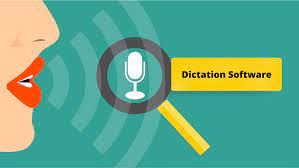
Empowering Productivity: The Evolution of Dictation Software
Dictation software, once considered a niche tool for the differently-abled, has evolved into a powerful productivity tool that benefits individuals and businesses alike. This article delves into the fascinating journey of dictation software, highlighting its transformation from a rudimentary transcription tool to a sophisticated, time-saving asset.
A Historical Perspective
The origins of Dictation software can be traced back to the 1950s when Bell Labs introduced the “Audrey” system, capable of recognizing spoken numbers. However, these early attempts were limited in their capabilities and largely experimental.
In the late 20th century, technological advancements began to accelerate the development of dictation software. IBM’s “Hidden Markov Model” (HMM) technology, a breakthrough in speech recognition, significantly improved the accuracy and usability of dictation systems. As processing power increased and algorithms became more refined, dictation software evolved into a viable productivity tool.
Enhancing Accessibility and Productivity
Dictation software initially gained prominence as an assistive technology, enabling individuals with disabilities to interact with computers and perform tasks that were otherwise challenging. However, its potential soon extended beyond accessibility. Today, dictation software is widely used for a variety of purposes, including transcribing audio files, composing documents, and controlling devices.
Revolutionizing Workflows
One of the key benefits of dictation software is its ability to streamline workflows and boost productivity. Professionals across various fields, from journalism to medicine, use dictation software to transcribe interviews, medical records, and other critical documents efficiently. This technology has not only saved time but also reduced the risk of transcription errors.
In the legal profession, dictation software has become an indispensable tool for lawyers and legal assistants. They can dictate briefs, contracts, and other legal documents, allowing them to focus on the substance of their work rather than the mechanics of typing.
Future Directions
As dictation software continues to evolve, we can anticipate several exciting developments. Artificial intelligence and machine learning are playing a significant role in improving accuracy and expanding the vocabulary that dictation software can recognize. Multilingual capabilities are also on the rise, making dictation software more accessible to a global audience.
Moreover, with the advent of mobile devices and smart speakers, dictation software is now more portable and versatile than ever before. Users can dictate notes, messages, and even control their smart home devices through voice commands.
In short, the evolution of dictation software from its humble beginnings to a productivity powerhouse is a testament to the boundless potential of technology. Its ability to empower individuals and businesses by saving time and enhancing accessibility makes it a tool that will likely continue to play a pivotal role in our increasingly digital world. As technology advances further, we can look forward to even more remarkable feats from dictation software.


